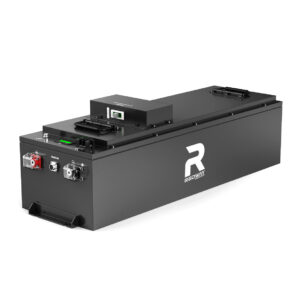What Makes the LiFePO4 48V 50Ah Battery Ideal for RVs and Carts?
A LiFePO4 48V 50Ah battery offers superior energy density, longer lifespan (2,000-5,000 cycles), and enhanced safety for RVs and carts. It weighs 50% less than lead-acid alternatives, charges faster, and operates efficiently in extreme temperatures (-20°C to 60°C). Its stable chemistry reduces fire risks, making it ideal for mobile and off-grid applications requiring reliable power.
What Makes LiFePO4 48V 50Ah Batteries Ideal for RVs and Carts?
LiFePO4 batteries provide consistent power output, deep-cycle capability, and minimal voltage drop. Their compact design saves space in RVs and carts, while high discharge rates support motors and inverters. Unlike lead-acid batteries, they maintain 80% capacity after 2,000 cycles, ensuring long-term cost savings and reduced replacement frequency.

How Does the Lifespan of LiFePO4 Compare to Traditional Batteries?
LiFePO4 batteries last 4-5x longer than lead-acid counterparts, with a lifespan of 10+ years under normal use. They endure deeper discharges (up to 90% DoD) without degradation, whereas lead-acid batteries degrade rapidly beyond 50% DoD. This longevity reduces total ownership costs despite higher upfront pricing.
Traditional lead-acid batteries typically require replacement every 3-5 years even with careful maintenance. In contrast, LiFePO4 chemistry maintains consistent performance across thousands of charge cycles. Testing data shows these batteries retain over 80% of their original capacity after 3,000 cycles when operated within recommended temperature ranges. For RV owners who frequently boondock, this translates to a decade of worry-free power without the annual costs of battery replacements. The table below illustrates key longevity comparisons:
| Battery Type | Cycle Life | DoD Limit | 10-Year Cost |
|---|---|---|---|
| LiFePO4 | 3,000+ | 90% | $1,200 |
| Lead-Acid | 500 | 50% | $2,800 |
Are LiFePO4 48V Batteries Safe for Off-Grid Applications?
Yes. LiFePO4’s thermally stable cathode material prevents thermal runaway, eliminating explosion risks. Built-in Battery Management Systems (BMS) monitor temperature, voltage, and current. These features make them safe for RVs and carts, even in poorly ventilated spaces, unlike volatile lithium-ion variants.
Can LiFePO4 Batteries Integrate with Solar Power Systems?
Absolutely. Their wide voltage range (40V-58.4V) and compatibility with MPPT charge controllers optimize solar energy storage. LiFePO4 batteries charge efficiently at partial states, unlike lead-acid, which requires full recharges. This synergy supports sustainable off-grid living by maximizing renewable energy utilization.
When paired with solar arrays, these batteries demonstrate 97% round-trip efficiency compared to lead-acid’s 80-85%. They can accept irregular charging patterns caused by cloudy weather without sulfation damage. Advanced models feature Bluetooth-enabled monitoring that syncs with solar inverters, allowing users to track energy harvest and consumption in real time. For optimal integration:
- Use MPPT controllers with LiFePO4-specific charging profiles
- Size solar arrays to provide 1.2C charging current
- Implement temperature compensation for cold climates
What Are the Environmental Benefits of LiFePO4 Technology?
LiFePO4 batteries contain non-toxic materials (iron, phosphate) and are 99% recyclable. Their long lifespan reduces landfill waste, and energy-efficient production emits 30% less CO2 than lead-acid manufacturing. Solar compatibility further lowers carbon footprints for eco-conscious users.
How to Properly Maintain a LiFePO4 48V 50Ah Battery?
Minimal maintenance is required. Avoid over-discharging below 10% and store at 50% charge if unused. Use compatible chargers (58.4V max) and clean terminals annually. BMS auto-protection handles most issues, but firmware updates may enhance performance over time.
“LiFePO4 batteries are revolutionizing mobile power solutions. At Redway, we’ve seen a 70% adoption spike in RV and cart conversions since 2022. Their ability to handle rapid charge/discharge cycles without degradation makes them unmatched for reliability. Future models may integrate AI-driven BMS for predictive maintenance, further boosting efficiency.”
— Redway Power Systems Engineer
FAQ
- How long does a LiFePO4 48V 50Ah battery last per charge?
- Runtime depends on load: a 1,000W RV inverter draws ~20A, providing ~25 hours at 50% DoD. Golf carts typically run 30-50 miles per charge.
- Can I replace lead-acid batteries with LiFePO4 directly?
- Yes, but ensure your charger supports LiFePO4 voltage profiles. Upgrade to a 58.4V charger and verify system compatibility to avoid under/overcharging.
- Do LiFePO4 batteries require special installation?
- No. They fit standard battery trays but check weight limits—LiFePO4 units weigh ~25kg vs. 50kg for lead-acid. Secure mounting and ventilation are advised.
